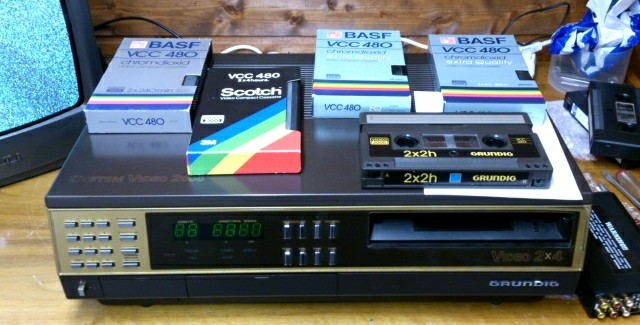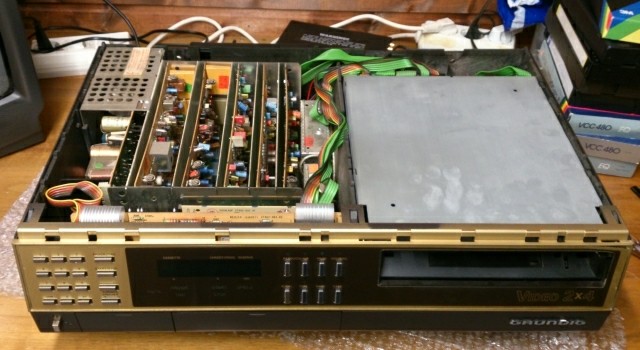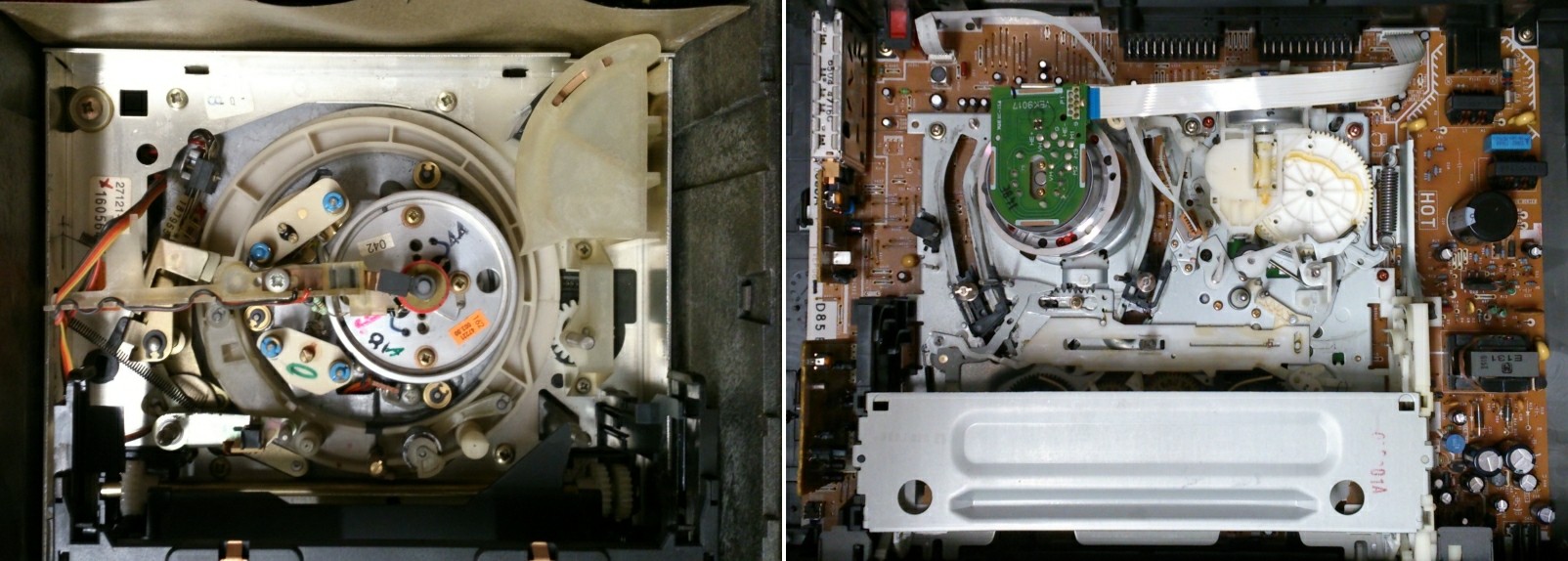Grundig Video 2000Even though our household never actually owned a VCR while I was growing up, I was certainly aware of the two competing video cassette recorder formats, VHS and Betamax. Personally, I was always rooting for that third format -- the one that was supposed to be technically superior and the one that nobody else had ever heard of: Video 2000 it was called, and the reason why nobody had ever heard of it was because it was a European format. Soon enough I had completely forgotten about it -- as did the rest of the world. Manufacture was discontinued in 1986. It was the first fatality of the format war. Unlike with the other pages in this section of the site, I will not bore you with a personal eulogy to some long-serving gadget that's now
given up the ghost; instead, I will bore you with the In July 2010 someone offered a freebie Grundig Video 2000 machine via Yahoo's Freecycle. The first thing I noticed when I went to fetch the item was its styling: Monstrous. Big. Brown with golden trim. Chromed plastic buttons. A huge 7-segment display. Typically ugly for the time. 
The second thing I noticed when I went to pick it up was its weight. Heavy! Solid. I'd estimate somewhere around 12kg. I hauled it home and plugged it in. It worked (as long as you held the power button down manually) and played the tapes that came with it. Junk recorded off TV. Quality was... well, like video tape. What did fascinate me the most were the tapes themselves -- looking like oversized audio cassettes and almost the same physical dimensions as the more familiar VHS tape. 
They're reversible, have insane playing times (VCC 480 = 2 x 4 hours), and they're far more robust. VHS feels like cheap crap in comparison. I then stored the stash away for playing with on another occasion which presented itself when I was banishing VHS from my home. Now's the time to inspect this baby! 
Unfortunately, the VCR didn't survive being stored for over four years: it played no more because it seems like one of the servos for turning the cassette spools had given up. Very disappointing. On the 10th of August 2014 this obduction was performed. Removal of an oil sump of a bottom plate took a good kilo off its weight, revealing the underside of a main board, four servos (one for the head, two for the tape drive, one for the loading mechanism), and an obscene amount of ribbon cables. Two screws later the top lid came off to reveal the juicy bits: several dedicated plug-in cards that go into the main board, the power supply, another solid plate that covers the drive mechanics, and more colourful ribbon cables. This monster was assembled by big, European hands. 
Removal of the heavy metal plate covering the tape drive was an electrifying experience for more reasons than one. Underneath was a mechanism noticeably different to the more familiar VHS. 
The most distinctive difference was the loading method in that the tape is wrapped around the video head in a U-shape, similar to Betamax and very unlike the M-shape of VHS. 
Large close-ups, with DTF circuitry visible: Angle 1 | Angle 2 Another observation was that the tape door (the spring-loaded flap on front-loading machines) was always open -- unless a cassette had been inserted. This is unlike VHS where the flap opens only while inserting or ejecting a tape. The write-protect tabs on the cassette itself were not of the break-out kind but rather mechanical switches that opened or closed holes in the cassette shell. A similar approach using a combination of opened/closed holes was used to tell sensors in the machine the length of the inserted tape. 
Introduced in 1979, the Video 2000 format did boast technical innovations such as DTF (Dynamic Track Following) but it came too late to the party; it just couldn't win over consumers or the burgeoning home video industry. This particular specimen was apparently made in around 1982, and it's built like a tank! The brown panelling and faceplate serve only to conceal a rigid endoskeleton made of a bakelite-like material. It's made to last and very maintenance-friendly, with its discrete components easily accessible and clearly marked. There is little doubt that ownership of such a recorder constituted a significant investment, and a long-term relationship. I eventually aborted the efforts to bring it back to life and consigned the Grundig 2x4 super (Bestellnummer 800) to the "Elektroschrott" heap. It was an interesting device to inspect and play with but it's not like I have much use for a huge and 30 year old VCR. Bye bye! This page last updated: 06-09-2014
|